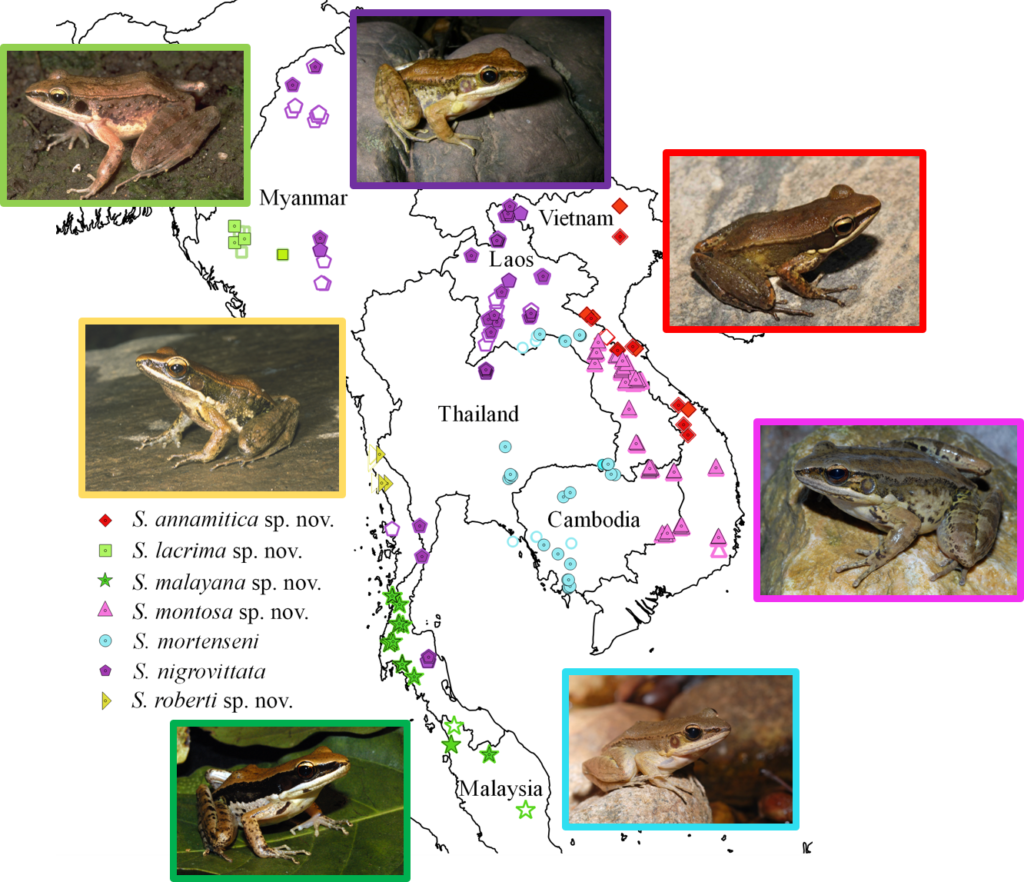Five new species of frogs identified in museum collections
Modern techniques reveal the existence of five previously miscategorised frog species
Researchers from Yale-NUS College and the North Carolina Museum of Natural Sciences have discovered five new species of Southeast Asian frogs from a group of museum specimens that had long been considered to only contain two species. This research by lead author Yale-NUS College Assistant Professor of Science (Environmental Studies) Jennifer Sheridan and her co-author Dr Bryan Stuart, Research Curator of Herpetology at the North Carolina Museum of Natural Sciences, was recently published in the peer-reviewed open access journal PLOS One . To distinguish the five new species of frogs from the original two, they examined close to 400 frogs housed in 11 natural history museum collections around the world and sequenced five genes from close to 350 individuals.
The discovery was made possible due to advances in techniques used to identify different species. Early biologists mainly used morphological characteristics, i.e. the organism’s physical form and structure, to categorise individuals into different species. Now, biologists have access to more advanced techniques, such as DNA sequencing, to study samples at both the morphological and molecular levels. Dr Stuart said, “Nearly a century ago, the British herpetologist and physician Malcolm Smith noted that populations of the frog Sylvirana nigrovittata across mainland Southeast Asia tended to also differ in size and coloration, but those differences in appearance were too subtle for him to separate them into more than just two species using the techniques that were available at the time. It’s only with the development of DNA sequencing technology, and improved natural history collections from Southeast Asia, that we were able to finally provide sufficient evidence for recognizing at least seven distinct species in this group of frogs.”
The most important implication of the study is the discovery of new species in Southeast Asia, which could lead to more effective conservation efforts in the region. Such efforts can only be effective if there is a better understanding of the species which exist in the region. Dr Sheridan noted, “We cannot prioritise areas for conservation if we do not even know what is there. Two of the five newly described species are only known from a very few localities, which means they are likely threatened with extinction. On average, there is nearly one new species described to science every day from Southeast Asia. That is an incredible rate of discovery. At the same time, Southeast Asia has the highest rate of habitat destruction in the world. It is very disturbing that we are losing habitat, and thus species both known and yet-to-be-discovered. The accurate identification of species and their geographical range boundaries are imperative for effective conservation.”

For media enquiries, please contact publicaffairs@yale-nus.edu.sg.

